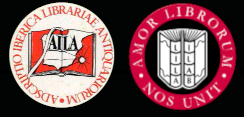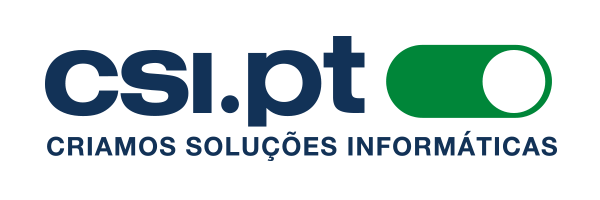


Home |
Temáticas |
Catálogos |
Pedidos |
  |  |
|||||||
|

|
RUGENDAS. (Johann Moritz) HABITANTE DE GOYAS, QUADRO A ÓLEO PINTADO SOBRE MADEIRA. |
|
|
Clique nas imagens para aumentar. SILVESTRE RIBEIRO. (José) HISTORIA DOS ESTABELECIMENTOS SCIENTIFICOS LITTERARIOS E ARTISTICOS DE PORTUGAL NOS SUCCESSSIVOS REINADOS DA MONARCHIA.[Por]... Socio correspondente da Academia Real das Sciencias de Lisboa. Tomo I. [a Tomo XVIII] Typographia da Academia Real das Sciencias. Lisboa. 1871-1893. 18 Volumes de 24,5x16,5 cm. Com xi, [iii], 521, [iv]; xi, [iii], 477; xi, [iii], 476, [i]; xi, [iii], 489; xi, [iii], 473, [ii]; xiii, [iii], 474, [i]; xi, [iii], 475, [ii]; vi, [ii], 495, [i]; xiii [i.e. xi], [iii], 493, [ii]; xx, [ii], 514; vi, [ii], 492, [i]; vi, [ii], 490, [i]; [vii], 464; vi, [ii], 571, [ii]; vi, [ii], 474, [iii]; [vii], 496, [vii]; vi, [ii], 658; [v], 367 págs. Encadernações com lombadas e cantos em pele, com nervos, rótulos e ferros a ouro em casas fechadas. Cortes das folhas aparados à cabeça. Ilustrado com tabelas em alguns volumes, incluindo desdobráveis nos 16 e 17. Mapas estatísticos do movimento dos estudantes da Universidade de Coimbra nos anos lectivos de 1877 a 1878 e 1879 a 1880. Exemplar com carimbo oleográfico de posse de Miguel Osório Cabral de Castro, onde se lê: «M. Osorio, Quinta das Lagrimas, Coimbra.», na folha de rosto e na página 17 do primeiro volume. Preserva as capas de brochura, com excepção das posteriores dos volumes 1, 3, 11 e 18. Apresenta etiqueta da Livraria Sá da Costa nas capas anteriores dos volumes 7 e 9. A capa posterior do volume 17 encontra-se em vias de se soltar. Tem manchas nas capas de brochura anteriores dos volumes 4, 8, 9, 11, 14 e 15, e na posterior do 15. Além disso o volume 8 apresenta um restauro amador na dita capa, com manchas de humidade até à segunda folha; o volume 9 pequenas manchas na margem direita, até à página 15; e o volume 12, 13, 14 e 16 manchas de oxidação nas primeiras e nas últimas folhas; o volume 13 manchas de oxidação da página 1 à 16. Tem um restauro amador na folha de anterrosto do volume 16 e nas páginas 323/324 do volume 18, que atinge o texto, com perda de algumas linhas. As folhas não numeradas que seguem as de numeração romana apresentam advertências. Colectânea da história dos principais estabelecimentos portugueses ligados às ciências, à literatura ou à arte, desde a instauração da monarquia até aos dias em que a obra se publicou. Apresenta as datas da instituição, os nomes e circunstâncias dos instituidores, os objectivos e fins destes estabelecimentos, assim como o seu progresso ao longo dos tempos, até a uma eventual (ou não) extinção. A necessidade desta obra urge de um sentimento patriótico do autor que afirma repugnar-se ao deparar com o «desamor das coisas nacionaes» em contraposição ao «trivial conhecimento do que existe ou existiu em França, na Belgica, na Inglaterra, em outros paizes». Pretende fornecer um compêndio de notícias legislativas, históricas, estatísticas e críticas relativos aos ditos estabelecimentos, responsáveis por «promover o desenvolvimento intelectual dos povos» e acerca dos quais «os nacionaes vêem-se privados de elementos de informação e de estudo, que lhes fazem falta». Estes estabelecimentos, públicos ou privados, contemplam academias, arquivos, associações, asilos, bibliotecas, casas pias, liceus, museus, teatros, universidades, entre tantos outros. Destaca-se uma elevada quantidade de informação referente ou relacionada à Universidade de Coimbra. A obra distribui-se ao longo de 17 volumes, mais um de índice, de forma cronológica. A sua organização, por exemplo ao nível do agrupamento temático, é variável ao longo dos volumes e específica à época e ao tipo de estabelecimentos que nesta foram criados. Por exemplo, no primeiro volume, que reúne os estabelecimentos que surgiram desde o século XII até 1777, o autor apenas discorre cronologicamente ao longo dos diferentes reinados. Contudo, a partir do reinado de D. José I, sente a necessidade de agrupar os estabelecimentos em quatro grupos, nomeadamente: estudos menores; línguas clássicas orientais; estabelecimentos especiais; Universidade de Coimbra. De forma a facilitar o acesso à informação, o autor apresenta sempre no final de cada volume um conjunto de 5 índices, a saber: Índice Geral; Índice dos estabelecimentos; Índice de pessoas e corporações; Índice dos autores citados; Índice das colecções, escritos anónimos, jornais, etc. mencionados. Os volumes 17 e 18 foram publicados postumamente, com organização de Eduardo Augusto da Rocha Dias. O último volume reúne todos os índices referidos. Foi publicado, em 1914, um volume de apontamentos organizado e antiloquiado por Álvaro Neves. Na capa de brochura é considerado como o 19.º e final volume desta obra. Miguel Osório Cabral de Castro (1818-1890), descendente da família Alarcão, foi residente na Quinta das Lágrimas e responsável pela idealização de grande parte dos jardins. O então proprietário beneficiou da sua amizade com o director do Jardim do Botânico.
Illustrated with tables in some volumes, including leaflets on 16 and 17. Statistical maps of the movement of students at the University of Coimbra in the academic years 1877 to 1878 and 1879 to 1880. Copy with oleographic stamp of possession of Miguel Osório Cabral de Castro, which reads: «M. Osorio, Quinta das Lagrimas, Coimbra.», on the title page and on page 17 of the first volume. The paperback covers are present, with the exception of the back covers of volumes 1, 3, 11 and 18. The front covers of volumes 7 and 9 bear the Livraria Sá da Costa label. The back cover of volume 17 is in the process of being detached. There are stains on the front covers of volumes 4, 8, 9, 11, 14 and 15, and on the back cover of volume 15. In addition volume 8 has an amateur restoration on said cover, with damp stains to the second leaf; volume 9 has small stains in the right margin, to page 15; and volume 12, 13, 14 and 16 have oxidation stains on the first and last leaves; volume 13 has oxidation stains from page 1 to 16. It has an amateur restoration on the front flyleaf of volume 16 and on pages 323/324 of volume 18, which reaches the text, with loss of some lines. Collection of the history of the main Portuguese establishments linked to science, literature or art, from the establishment of the monarchy to the days when the work was published. It presents the dates of institution, the names and circumstances of the institutes, the aims and purposes of these establishments, as well as their progress through time, until their eventual (or not) extinction. The need for this work is urged by a patriotic feeling on the part of the author, who states that he is repulsed to come across the «desamor das coisas nacionaes» (a lack of love for national things) as opposed to «trivial conhecimento do que existe ou existiu em França, na Belgica, na Inglaterra, em outros paizes» (trivial knowledge of what exists or existed in France, in Belgium, in England, in other countries). It aims to provide a compendium of legislative, historical, statistical and critical news concerning the said establishments, responsible for «promover o desenvolvimento intelectual dos povos» (promote the intellectual development of the peoples) and about which «os nacionaes vêem-se privados de elementos de informação e de estudo, que lhes fazem falta» (Nationals are deprived of the information and study elements that they need). These establishments, whether public or private, include academies, archives, associations, asylums, libraries, pious houses, lyceums, museums, theatres and universities, among many others. A large amount of information referring or relating to the University of Coimbra stands out. The work is chronologically distributed over 17 volumes, plus an index. Its organisation, for example at the level of thematic grouping, is variable throughout the volumes and specific to the period and the type of establishments that were created therein. For example, in the first volume, which brings together the establishments that arose from the 12th century until 1777, the author only discusses the different reigns chronologically. However, from the reign of King José I, he feels the need to group the establishments into four groups, namely: minor studies; classical oriental languages; special establishments; University of Coimbra. In order to facilitate access to the information, the author always presents at the end of each volume a set of 5 indexes, namely: General Index; Index of establishments; Index of persons and corporations; Index of authors cited; Index of collections, anonymous writings, newspapers, etc. mentioned. Volumes 17 and 18 were published posthumously, with organization by Eduardo Augusto da Rocha Dias. The last volume gathers all the mentioned indexes. It was published in 1914, a volume of notes organised and antilokied by Álvaro Neves. In the paperback cover it is considered to be the 19th and final volume of this work. Miguel Osório Cabral de Castro (1818-1890), a descendant of the Alarcão family, was a resident of Quinta das Lágrimas and responsible for devising much of the gardens. The then owner benefited from his friendship with the director of the Botanical Garden. Referências/References: Geni; Olisipo, boletim do grupo «amigos de lisboa», abril n.º 2, outubro n.º 4. Inocêncio XIII, 216-217. Referência: 2207SB012
Local: I-205-F-1 Caixa de sugestões A sua opinião é importante para nós. Se encontrou um preço incorrecto, um erro ou um problema técnico nesta página, por favor avise-nos. 
|
Pesquisa Simples




|
||
 |
|||
|